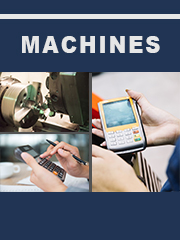Report overview
Metal Powder Additive Manufacturing Equipment also known as Metal 3D printing equipment, can produce metallic products through three - dimensional and printing technology. Now it is widely used in automotive industry, aerospace industry and medical industry. Metal 3D printer works by laying down metal powder. A high powered laser then melts that powder in certain precise locations based on a CAD file. Once one layer is melted, the printer will place another layer of metal powder on top, and the process repeats until an entire object is fabricated.
This report aims to provide a comprehensive presentation of the global market for Metal Powder Additive Manufacturing Equipment, with both quantitative and qualitative analysis, to help readers develop business/growth strategies, assess the market competitive situation, analyze their position in the current marketplace, and make informed business decisions regarding Metal Powder Additive Manufacturing Equipment. This report contains market size and forecasts of Metal Powder Additive Manufacturing Equipment in global, including the following market information:
Global Metal Powder Additive Manufacturing Equipment Market Revenue, 2018-2023, 2024-2029, ($ millions)
Global Metal Powder Additive Manufacturing Equipment Market Sales, 2018-2023, 2024-2029, (Units)
Global top five Metal Powder Additive Manufacturing Equipment companies in 2022 (%)
The global Metal Powder Additive Manufacturing Equipment market was valued at US$ million in 2022 and is projected to reach US$ million by 2029, at a CAGR of % during the forecast period. The influence of COVID-19 and the Russia-Ukraine War were considered while estimating market sizes.
The U.S. Market is Estimated at $ Million in 2022, While China is Forecast to Reach $ Million.
Selective Laser Melting (SLM) Segment to Reach $ Million by 2029, with a % CAGR in next six years.
The global key manufacturers of Metal Powder Additive Manufacturing Equipment include EOS GmbH, GE Additive, Farsoon Technologies, Bright Laser Technologies, HBD, Huake 3D, Renishaw, SLM and 3D Systems, etc. in 2022, the global top five players have a share approximately % in terms of revenue.
We surveyed the Metal Powder Additive Manufacturing Equipment manufacturers, suppliers, distributors and industry experts on this industry, involving the sales, revenue, demand, price change, product type, recent development and plan, industry trends, drivers, challenges, obstacles, and potential risks.
Total Market by Segment:
Global Metal Powder Additive Manufacturing Equipment Market, by Type, 2018-2023, 2024-2029 ($ Millions) & (Units)
Global Metal Powder Additive Manufacturing Equipment Market Segment Percentages, by Type, 2022 (%)
Selective Laser Melting (SLM)
Electron Beam Melting (EBM)
Others
Global Metal Powder Additive Manufacturing Equipment Market, by Application, 2018-2023, 2024-2029 ($ Millions) & (Units)
Global Metal Powder Additive Manufacturing Equipment Market Segment Percentages, by Application, 2022 (%)
Automotive Industry
Aerospace Industry
Healthcare and Dental Industry
Academic Institutions
Others
Global Metal Powder Additive Manufacturing Equipment Market, By Region and Country, 2018-2023, 2024-2029 ($ Millions) & (Units)
Global Metal Powder Additive Manufacturing Equipment Market Segment Percentages, By Region and Country, 2022 (%)
North America
US
Canada
Mexico
Europe
Germany
France
U.K.
Italy
Russia
Nordic Countries
Benelux
Rest of Europe
Asia
China
Japan
South Korea
Southeast Asia
India
Rest of Asia
South America
Brazil
Argentina
Rest of South America
Middle East & Africa
Turkey
Israel
Saudi Arabia
UAE
Rest of Middle East & Africa
Competitor Analysis
The report also provides analysis of leading market participants including:
Key companies Metal Powder Additive Manufacturing Equipment revenues in global market, 2018-2023 (Estimated), ($ millions)
Key companies Metal Powder Additive Manufacturing Equipment revenues share in global market, 2022 (%)
Key companies Metal Powder Additive Manufacturing Equipment sales in global market, 2018-2023 (Estimated), (Units)
Key companies Metal Powder Additive Manufacturing Equipment sales share in global market, 2022 (%)
Further, the report presents profiles of competitors in the market, key players include:
EOS GmbH
GE Additive
Farsoon Technologies
Bright Laser Technologies
HBD
Huake 3D
Renishaw
SLM
3D Systems
Eplus3D
Exone
Xinjinghe
Outline of Major Chapters:
Chapter 1: Introduces the definition of Metal Powder Additive Manufacturing Equipment, market overview.
Chapter 2: Global Metal Powder Additive Manufacturing Equipment market size in revenue and volume.
Chapter 3: Detailed analysis of Metal Powder Additive Manufacturing Equipment manufacturers competitive landscape, price, sales and revenue market share, latest development plan, merger, and acquisition information, etc.
Chapter 4: Provides the analysis of various market segments by type, covering the market size and development potential of each market segment, to help readers find the blue ocean market in different market segments.
Chapter 5: Provides the analysis of various market segments by application, covering the market size and development potential of each market segment, to help readers find the blue ocean market in different downstream markets.
Chapter 6: Sales of Metal Powder Additive Manufacturing Equipment in regional level and country level. It provides a quantitative analysis of the market size and development potential of each region and its main countries and introduces the market development, future development prospects, market space of each country in the world.
Chapter 7: Provides profiles of key players, introducing the basic situation of the main companies in the market in detail, including product sales, revenue, price, gross margin, product introduction, recent development, etc.
Chapter 8: Global Metal Powder Additive Manufacturing Equipment capacity by region & country.
Chapter 9: Introduces the market dynamics, latest developments of the market, the driving factors and restrictive factors of the market, the challenges and risks faced by manufacturers in the industry, and the analysis of relevant policies in the industry.
Chapter 10: Analysis of industrial chain, including the upstream and downstream of the industry.
Chapter 11: The main points and conclusions of the report.
